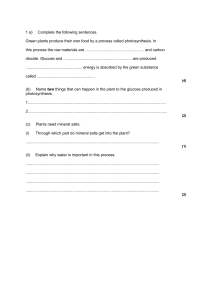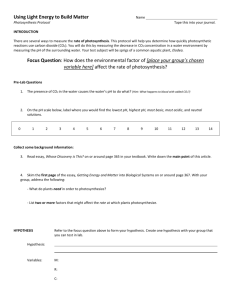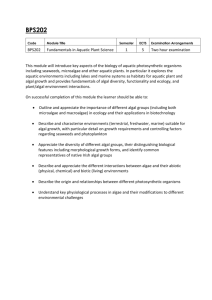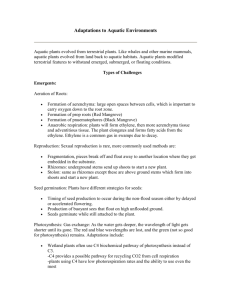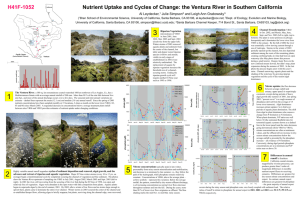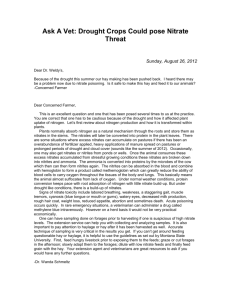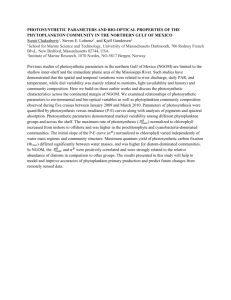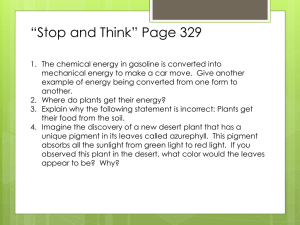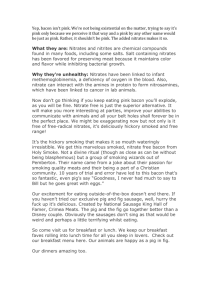PPTReview of Test 1
advertisement
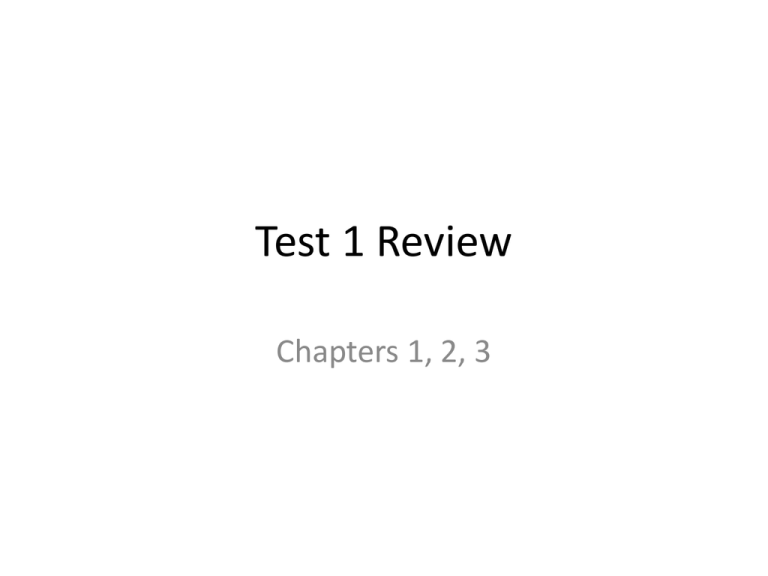
Test 1 Review Chapters 1, 2, 3 The students decided to perform water quality tests on their model system. List three water-quality tests that could be conducted and explain what information each test provides. Include in your answers a description of the impact of each factor on the health of the aquatic organisms. • Rubric- Question 1 Scoring Guidelines Part a (Max 9 points): 1 point to be awarded for each abiotic test (3required) linked with a description of what it measures (1 point ea); for example the nitrate test measures the concentration of nitrates (maximum 3 tests). For each parameter a point to be awarded for an "impact" statement that links it to a specific effect on organisms. For example increased nitrate levels can lead to algal blooms and ultimately lower dissolved oxygen levels. No credit was given for stating an organism can only survive in a specific range of nitrates. Statements so general they could apply to numerous water quality tests were not accepted. Using the graph paper provided, plot the results that were obtained. Then, using the same set of axes, draw and label an additional line/curve representing the results that you would predict had the day been heavily overcast. 3pts with overcast line Less light energy, less Photosynthesis, lower Ox • C. Explain the biological processes that are operating in the lake to produce the observed data. Explain also how these processes would account for your prediction of results for a heavily overcast day. (6pts)3 pts expl of production of oxygen and loss of oxygen at night resp) C. Oxygen levels are produced through the process of photosynthesis. The rate of Photosynthesis increases with with the availability of light. We would expect the aquatic system to have low oxygen levels early in the morning because there was no light throughout the night. As the light energy increases, so does the rate of photosynthesis as long as all other requirements are present. Photosynthetic rate is highest late in the afternoon because the levels of oxygen are accumulating. As the light energy wanes so will the photosynthetic rate. The plants will begin using more oxygen during the process of respiration and the levels of oxygen will begin to drop steadily through the night. The level of oxygen would never reach zero because ultimately there is a net gain of oxygen. D. Describe how the introduction of high levels of nutrients such as nitrates and phosphates into the system would affect subsequent observations. Explain your prediction D. Phosphate is the number one limiting factor in aquatic systems. Increasing the amount of phosphate would increase the growth rate of algae and aquatic plants in the system. Additional nitrates would also promote excess algal growth. The growth in turn, would deplete all resources, massive die –off, deprives the water below of dissolved oxygen, triggering fish kills. Normally, nitrogen compounds and phosphate are necessary nutrients, but excess amounts cause eutrophication. (4pts)3 pts expl of increase in photosynthesis ,plant growth increase, overpopulation, depletion of resources, death, decomposition uses all available oxygen, hypoxic or anaerobic environment,
